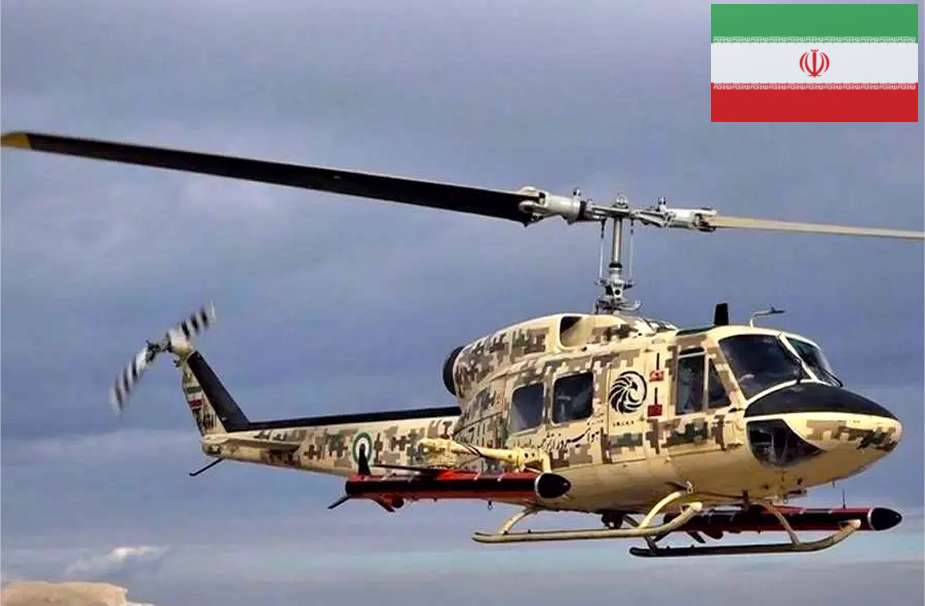Breaking news
Iranian IRGC to unveil new air-to-air missiles.
As reported by Tasnim on November 25, 2023, the Islamic Revolution Guards Corps (IRGC) Navy of Iran has announced the development of two new air-to-air missiles, according to statements from IRGC Navy Commander Rear Admiral Ali Reza Tangsiri. These missiles, already manufactured and set to be unveiled in the future, as noted by the commander, are designed for targeting and neutralizing hostile drones and guided missiles, with claimed ranges of approximately 4 and 17 km.
Follow Air Recognition on Google News at this link
 Iran recently showcased a Bell 214 helicopter armed with Heidar air-to-ground missiles during military exercises in central Iran (Picture source: Tasnim)
Iran recently showcased a Bell 214 helicopter armed with Heidar air-to-ground missiles during military exercises in central Iran (Picture source: Tasnim)
Iran's Islamic Revolutionary Guard Corps (IRGC) Navy, under the leadership of Rear Admiral Alireza Tangsiri, recently announced the integration of artificial intelligence (AI) into indigenous drones, missiles, and naval vessels. The stated objective is to enhance the range, accuracy, and radar evasion capabilities of these systems, with a focus on navigation, drones, missiles, and submarine operations. Rear Admiral Tangsiri has mentioned that navy vessels are now equipped with AI for autonomous long-distance navigation and crewless operational capabilities. Additionally, he noted that missiles are now equipped with advanced AI technology, allowing for precision strikes at distances up to 2,000 km.
Commander Tangsiri describes these missiles as having global significance, highlighting Iran's ongoing efforts to strengthen its military capabilities. This unveiling is part of a broader strategy, with the IRGC Navy introducing advanced vessels such as the Shahid Soleimani patrol combat warship and the Shahid Bagheri drone aircraft carrier, emphasizing Iran's growing self-sufficiency in military technology. Iran recently unveiled a range of new military assets, including the Merhan surface-to-air missile system, the jet-powered Shahed-238 drone, and the Fattah-2 hypersonic cruise missile.
The announcement takes place in a complex and tense geopolitical context, characterized by escalating tensions between Iran and the United States, as well as regional challenges such as the ongoing Gaza war.
In light of these developments, the United States faces limited options in responding to Iran's military capabilities and nuclear advancements, especially with recent reports suggesting Iran's possession of enough uranium enriched to up to 60% purity, close to weapons-grade, for three atomic bombs. Efforts to revive the 2018 nuclear deal between Iran and world powers have stalled, further complicated by recent attacks by Iran-backed groups on US ally Israel and subsequent strikes on US and coalition troops in Iraq and Syria.
In response, the US has increased its military presence in the region, deploying two aircraft carriers and warplanes to the eastern Mediterranean. This move is seen as a precautionary measure to signal to Tehran while aiming to prevent further escalation. As Iran continues to enhance its military capabilities, the international community, particularly the United States, remains watchful, balancing the need to respond to Iran's actions with the imperative to prevent further destabilization in an already precarious region.

























